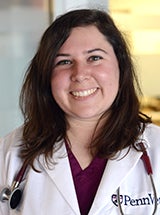A New Penn Vet Study Aims to Shed Light on Honeybees’ Foraging Habits, with an Eye Toward Aiding their Survival
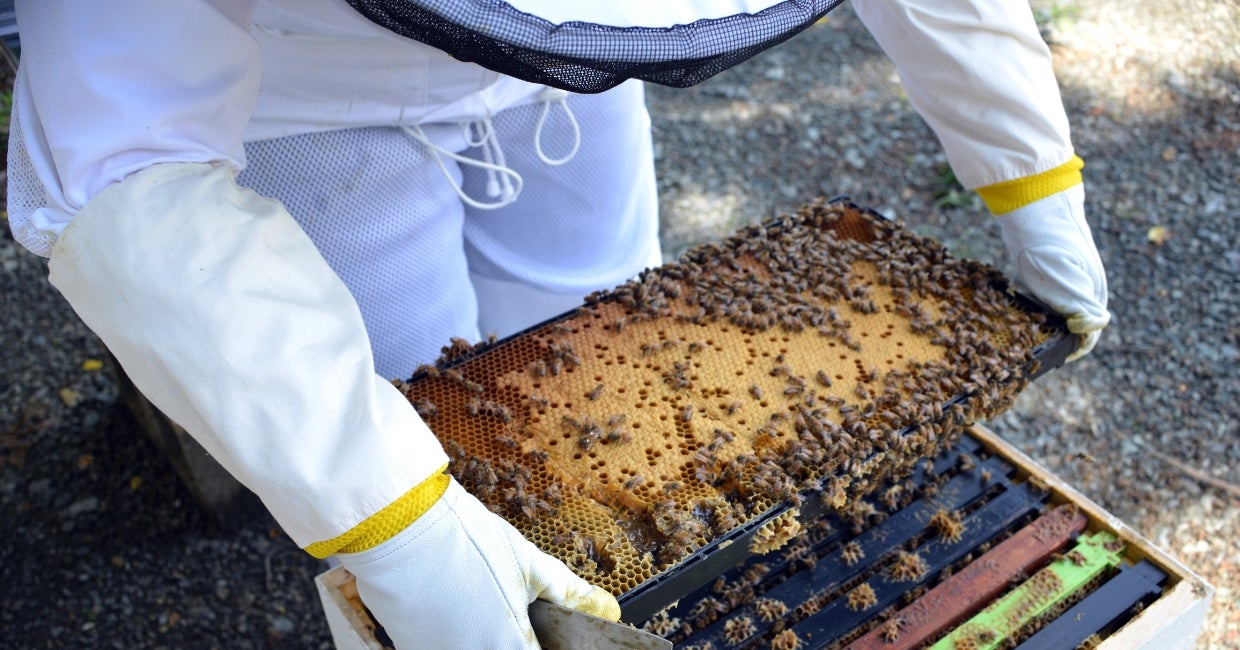
Faculty In This Story
What do you know about the secret lives of honeybees?
For example, how far will a honeybee travel for its favorite blossom? What might that blossom be? Sure, you’ve seen these ubiquitous creatures buzzing about. But do you know the waggle dance? Honeybees do — quite well in fact. Soon you will, too.
A new study recently underway at the University of Pennsylvania School of Veterinary Medicine’s (Penn Vet) New Bolton Center, led by Associate Professor of Epidemiology Laurel Redding, aims to shed light on the foraging patterns and preferences of local honeybees. The project, a recipient of a $14,800 grant from the Carl H. Goldsmith Sustainable Agriculture Fund of Penn’s Kleinman Center for Energy Policy, will provide a base for further exploration into these vital insect pollinators.
“This grant is allowing us to establish the foundation for future research into our honeybees’ health by establishing what our honeybees have access to and what they’re foraging in,” said Redding, a faculty member of the Center for Stewardship Agriculture and Food Security at the New Bolton Center.

and Krebs, who is also part of the study
and NBC’s hives manager (right).
The research team is doing monthly sampling and analysis to learn what the honeybees occupying New Bolton Center’s four hives are consuming and from where. July’s work has already been done. Next will be August and September’s samplings. The research will continue next spring in April, May, and June.
Each month, study partner Cynthia Skema, a botanical scientist with the University of Pennsylvania’s Morris Arboretum, will conduct a walking survey, taking note of the flowering plants, shrubs and trees within a half-mile, or one-kilometer area of the New Bolton Center hives. The intent is to catalogue plant life from the areas where the honeybees are foraging, getting their pollen and nectar nutrients. Only about half of the overall area is New Bolton Center property. The balance consists of townlands and private property that Skema has been permitted access to.
“I have been incredibly impressed by how generous and kind everybody is about allowing me onto their property and actually giving me the time and space to do that survey,” Skema said. “I’ve had people reach out to tell me they’re concerned about bees. It is really nice to see how interested and willing people are to participate in a scientific survey.”
The other aspect of the study is discovering what the honeybees consume at various points in time. To do that, the researchers plan to perform pollen metabarcoding, a technique that identifies floral components to the genus level in pollen and honey.
Kaitlyn Krebs, New Bolton Center’s hive manager and adjunct Assistant Professor of Honeybee Medicine at Penn Vet, is charged with collecting the pollen from special traps at the hives, as well as honey samples.
The plant accounting and pollen analysis may be able to show honeybees’ foraging preferences, including how far they are willing to travel for those specific nutrition sources, along with other information that may be relevant to their well-being.
“That’s what we’re looking at,” Krebs said. “Are there plants or planting methods or things like that which could help them be healthier, or safeguard their health?”
The waggle dance: Honeybees helping their hive-mates forage and flourish
Another part of the study under development involves those waggle dances. A real phenomenon among these Beyoncés of the bee world, the waggle dance is a figure-eight-shaped dance consisting of alternating moves made by a successful forager upon returning to her hive that conveys to other bees where she has collected food. Foragers are the hive’s worker bees, which are all females. Duration of their dance correlates to the distance of the food source; angle of the dance indicates the direction.
The researchers are hoping to capture the New Bolton Center honey divas in action with in-hive video cameras, but that will take time to implement.
Apparently, other researchers who have tried to do the same have found that honeybees will sometimes cover the cameras with propolis, a resinous substance bees produce that, according to Redding, can undermine efforts to capture their dance moves.
Honeybee hives were brought to New Bolton Center last year to help students learn about honeybee medicine. A relatively new discipline, honeybee medicine emerged after the federal Food and Drug Administration mandated veterinary oversight in prescribing antibiotics for food-producing animals. It’s grown to encompass a broader definition of care for these important creatures that contribute so much to our food supply.
Besides producing honey, farmed honeybees are responsible for a vast share of commercial pollination. Honeybees play a significant role in the cultivation of such crops as almonds, blueberries, apples, squash, and avocados, among others.
While not classified as endangered like some wild species, massive, unexplained honeybee deaths were reported this year by commercial beekeepers across the United States. Factors like pesticides, loss of food, parasites, disease and climate change were among the possible causes.
The New Bolton Center study aims to understand honeybees better to help keep them healthy.
“The cool thing about this particular research project is we’re not only studying the bees,” said Krebs. “We are also looking at the environment and taking a One Health lens to the activity of the bees and the sustainability initiatives New Bolton Center has been implementing.”
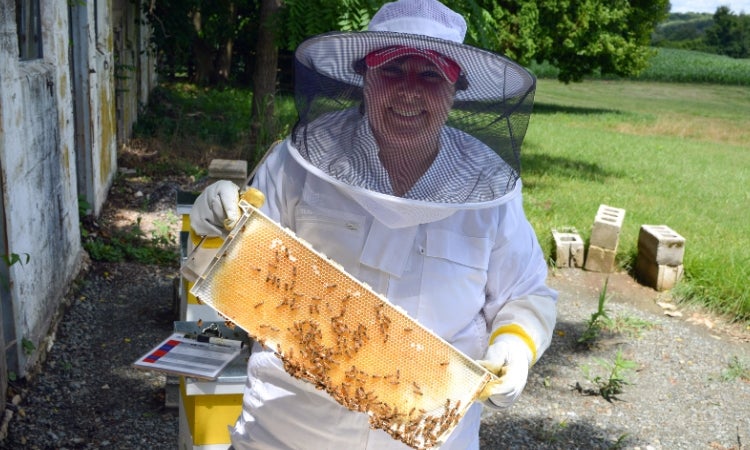
Related News
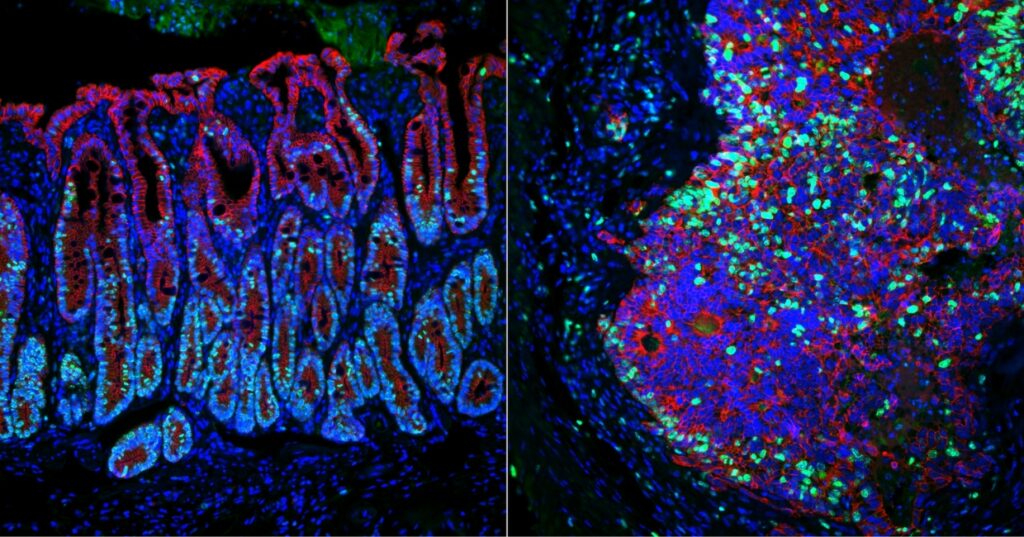
Identifying genes that keep cancer from spreading (link is external)
Using a novel approach, Penn Vet’s Chris Lengner and M. Andrés Blanco and colleagues have identified two genes that suppress colorectal cancer metastasis.
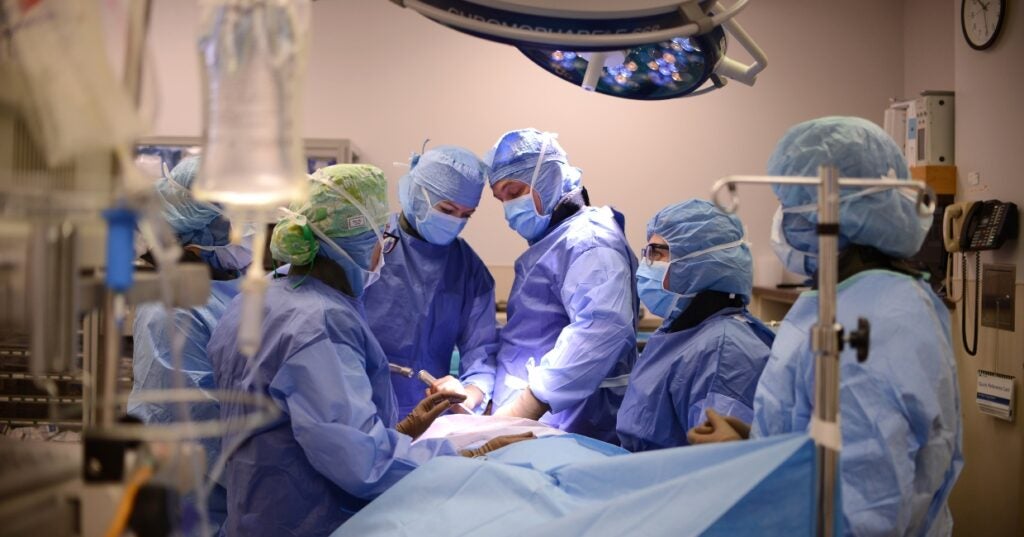
Penn Vet’s Total Hip Replacement Program Helps Heal Dogs With Hip Dysplasia So They Can Live ‘Their Best Lives’
Stephanie and Michael Fullmer fell in love with Cora, a sweet-natured rescue Golden Retriever, as soon as they saw her photo. And Cora loved back – kids, kittens, other dogs,…
About Penn Vet
Ranked among the top ten veterinary schools worldwide, the University of Pennsylvania School of Veterinary Medicine (Penn Vet) is a global leader in veterinary education, research, and clinical care. Founded in 1884, Penn Vet is the first veterinary school developed in association with a medical school. The school is a proud member of the One Health initiative, linking human, animal, and environmental health.
Penn Vet serves a diverse population of animals at its two campuses, which include extensive diagnostic and research laboratories. Ryan Hospital in Philadelphia provides care for dogs, cats, and other domestic/companion animals, handling more than 30,000 patient visits a year. New Bolton Center, Penn Vet’s large-animal hospital on nearly 700 acres in rural Kennett Square, PA, cares for horses and livestock/farm animals. The hospital handles more than 6,300 patient visits a year, while our Field Services have gone out on more than 5,500 farm service calls, treating some 22,400 patients at local farms. In addition, New Bolton Center’s campus includes a swine center, working dairy, and poultry unit that provide valuable research for the agriculture industry.


